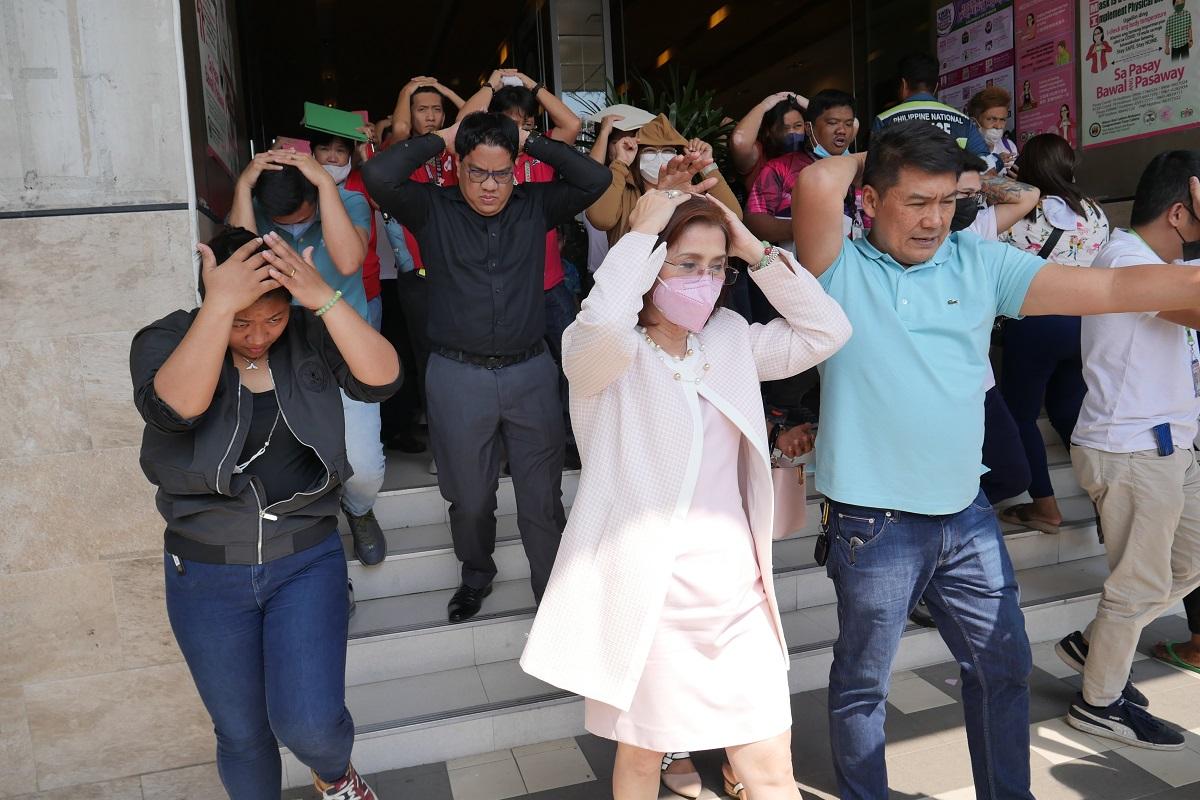OCD eyeing evening quake drills, various scenario activities
By ANNA FELICIA BAJO, GMA Integrated News Published March 26, 2024 11:32am The Office of Civil Defense (OCD) is exploring the conduct of evening exercises and various scenario training activities for the succeeding Nationwide Simultaneous Earthquake Drills (NSEDs) to improve the preparedness of the public during seismic disasters. The agency said that evening drills would […]


By ANNA FELICIA BAJO, GMA Integrated News
The Office of Civil Defense (OCD) is exploring the conduct of evening exercises and various scenario training activities for the succeeding Nationwide Simultaneous Earthquake Drills (NSEDs) to improve the preparedness of the public during seismic disasters.
The agency said that evening drills would enable authorities “to test the preparations” outside of the usual exercises conducted during daytime.
“Subukan din nating magsanay nang gabi na mangyayari ‘yung lindol. Mapapansin niyo ‘yung halos lahat ng mga pagsasanay natin ay office hours. Sa gabi, tanggapin natin na lahat halos ng government officials, national and local ay nasa kabahayan ‘yan. So mag-practice din tayo nang gabi. [Kung] papaano ‘yun? Iniisip natin na i-level up. Gagawa tayo ng iba’t ibang scenarios para hindi lang ‘yung duck, cover, and hold, so that we can really test the preparations,” OCD Administrator Undersecretary Ariel Nepomuceno said in a press release.
(Let’s try to do exercises during a nighttime scenario. If you’ll notice, almost all of our drills are conducted during office hours. Let’s face it, almost all the government officials, national and local employees, are already in their homes at night. So let’s practice in the evening, too. How? We are thinking to level up our preparedness. We will explore other scenarios so we don’t just do the duck, cover, and hold routine, so that we can really test the preparations.)
National Disaster Risk Reduction and Management Council (NDRRMC) Chairman and Defense Secretary Gilberto Teodoro Jr. agreed to this, saying that there are scenarios that can be simulated for the next exercises.
“Isa ring nakikita namin, maaaring magkaroon ng pinsala, alas-sais ng gabi, nasa lansangan lahat ng vehicles, bus, mass transportation systems at dito gusto natin i-check ‘yung kaligtasan,” Teodoro said.
(One scenario we are studying is that the disaster happens around 6 p.m., when all vehicles and buses are on the road. Mass transport systems would be in full operations. So we also want to check the level of safety at that time.)
“Kung nasa lansangan, i-check natin ang integrity ng mga tulay kasi kung sa lansangan mismo, hindi gaanong peligroso kung walang bumagsak na mga gusali. ‘Yun nga lang makakaapekto ito sa pagresponde natin kasi walang madadaanan ang ating mga first responders. Bagamat ganoon, gumagawa rin ang mga MMDA ng mga alternative routes kung saan puwede dumaan ang ating mga emergency responders.” he added.
(For disaster preparedness on the road, let’s check the integrity of bridges. Our streets are not that dangerous because buildings have not fallen to the ground. However, that would affect how our first responders react to disasters because the roads would be blocked. Nonetheless, the MMDA also maps out alternative routes where the emergency responders can pass.)
The Philippines conducted simultaneous earthquake drills to raise preparedness during quakes on Monday.
The OCD earlier said that the drill would help to assess the effectiveness of the NDRRMC and its member agencies in responding to a simulated disaster scenario through testing of the communication protocols, coordination mechanisms, and resource mobilization. — VDV, GMA Integrated News














